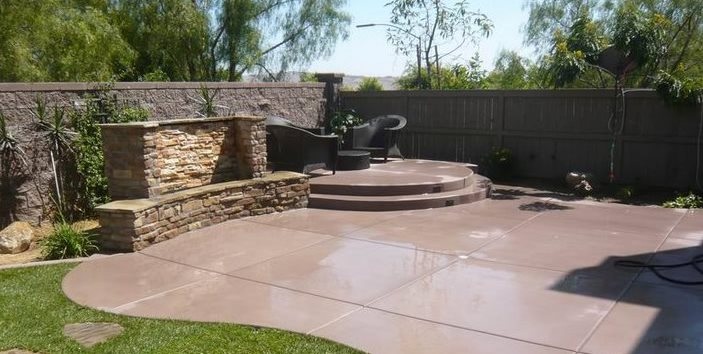Are you planning to build an exposed aggregate concrete patio in your backyard? Here are 5 essential steps you or your concrete professionals should take.
It’s easy to see why so many of us are choosing to remodel our patios, walkways, and drives with exposed aggregate concrete.
There are hundreds of amazing options out there.

If you’re installing your own, follow our straightforward steps to lay a fantastic-looking new patio.
Or if you’re employing professionals to do the job for you, make sure they’re following them!
- Choose Your Exposed Aggregate Concrete
One of the best things about this material is that it’s decorative, not just functional. The first step is choosing the decorative effect you’d like to see.
Many different materials can be mixed into the aggregate to achieve different effects. Crushed glass achieves a glow effect, for example, while mica can create ‘sparkles’.
Some people have even experimented using isopropyl to hold a lingering scent within the aggregate!
Once you’ve chosen a style, it’s time to get to work.
- Consider the Weather
Firstly, you need a dry day to do this work.
But you also need to consider the long-term effects of weather on your newly laid exposed aggregate concrete patio.
You need a lay a quarter-inch fall for every foot of width, to ensure proper drainage when it rains or snows. This means that the path will slope slightly to the side – though you won’t be able to notice this while walking.
Lay out the sides of your patio using wooden planks as ‘form boards’, remembering to account for the fall.
- A Rock Base and Concrete Thickness
You need a compacted rock base of at least 3-1/2 inch. Pack it down real tight. Hiring a plate compactor is not a bad idea if you’re not a professional. This tool is used to pack the rock down efficiently and evenly.
Above the rock base, you’ll be looking for another 3-1/2 inch layer of concrete.
Let’s talk about pouring that out.
- Pour and Level Your Concrete
It helps to get your cement ready-mixed to save you the hassle, and ensure a mix. The ready-mix firm you use should also be able to offer advice on the mix which is best to use for you.
Pour the concrete between your form boards, leveling it as you go with floats and screeds. These are other tools to hire for this task if the homeowner.
- Exposing the Aggregate
If you can push down on the concrete and not feel the gravel underneath moving, it’s time to wash the surface and expose the aggregate.
It’s better to be too early than too late, or you’ll be stuck for hours brushing down the surface! Once the gravel stops moving, you just need to blast the top layer of cement away with a hose.
Move the form boards first, and move the spray methodically and evenly across the patio.
A surface retarder can help to make the exposure of your aggregate better. Read all the instructions fully before you use it.
Now, seal and cure the exposed aggregate concrete, and stop people walking on it for a few days.
Congratulations, you’re all done!
Professional Exposed Aggregate Concrete Jobs
If you don’t fancy taking on the task yourself, that’s completely fair enough.
It’s messy work, but we don’t mind mucking in.
Learn more about why you should consider this versatile material on our blog, then phone us for a quote.





